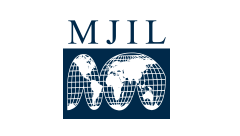Abstract
This note examines how the antitrust and trade law options operate, with the two-fold purpose of providing some idea of their potential effectiveness and also suggesting what limitations, if any, should be placed on their use. Parts I and II analyze the mechanics of applying the antitrust and Section 301 remedies to eliminate foreign trade-restrictive business practices. In light of this discussion of how the two processes work, Part III considers whether they are likely to get out of control and suggests how they ought to be restrained. Part III finds that Section 301 is subject to a number of constraints that generally will keep its use within reasonable bounds. The antitrust remedy, however, emerges as more problematic. While it may fruitfully and reasonably be used to promote U.S. exports in some instances, it is unclear whether the courts will keep private litigants from taking the remedy to lengths that would be damaging to U.S. interests and to the development of international law. Existing domestic law fails to offer sufficient guidance, and the relevant international norms (should the courts even deem them within the province of judicial cognizance) are far too open-ended. The danger is not only that the United States will encounter diplomatic friction but, worse, that some foreign powers will begin to exercise jurisdiction in a similarly aggressive manner. Accordingly, Part III proposes a policy of self-restraint. Such a policy could be explicitly adopted by U.S. enforcement agencies, in hopes that this would influence private litigants and the courts. A statement of policy adhered to in practice would send a clear message to foreign powers. The word and deed of the United States could in turn influence and evolve with the practices of other states, and a reasonable customary norm might emerge.
Recommended Citation
Aubry D. Smith,
Bringing Down Private Trade Barriers- An Assessment of the United States' Unilateral Options: Section 301 of the 1974 Trade Act and Extraterritorial Applications of U.S. Antitrust Law,
16
Mich. J. Int'l L.
241
(1994).
Available at:
https://repository.law.umich.edu/mjil/vol16/iss1/4
Included in
Antitrust and Trade Regulation Commons, International Trade Law Commons, Legislation Commons

